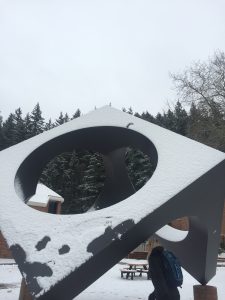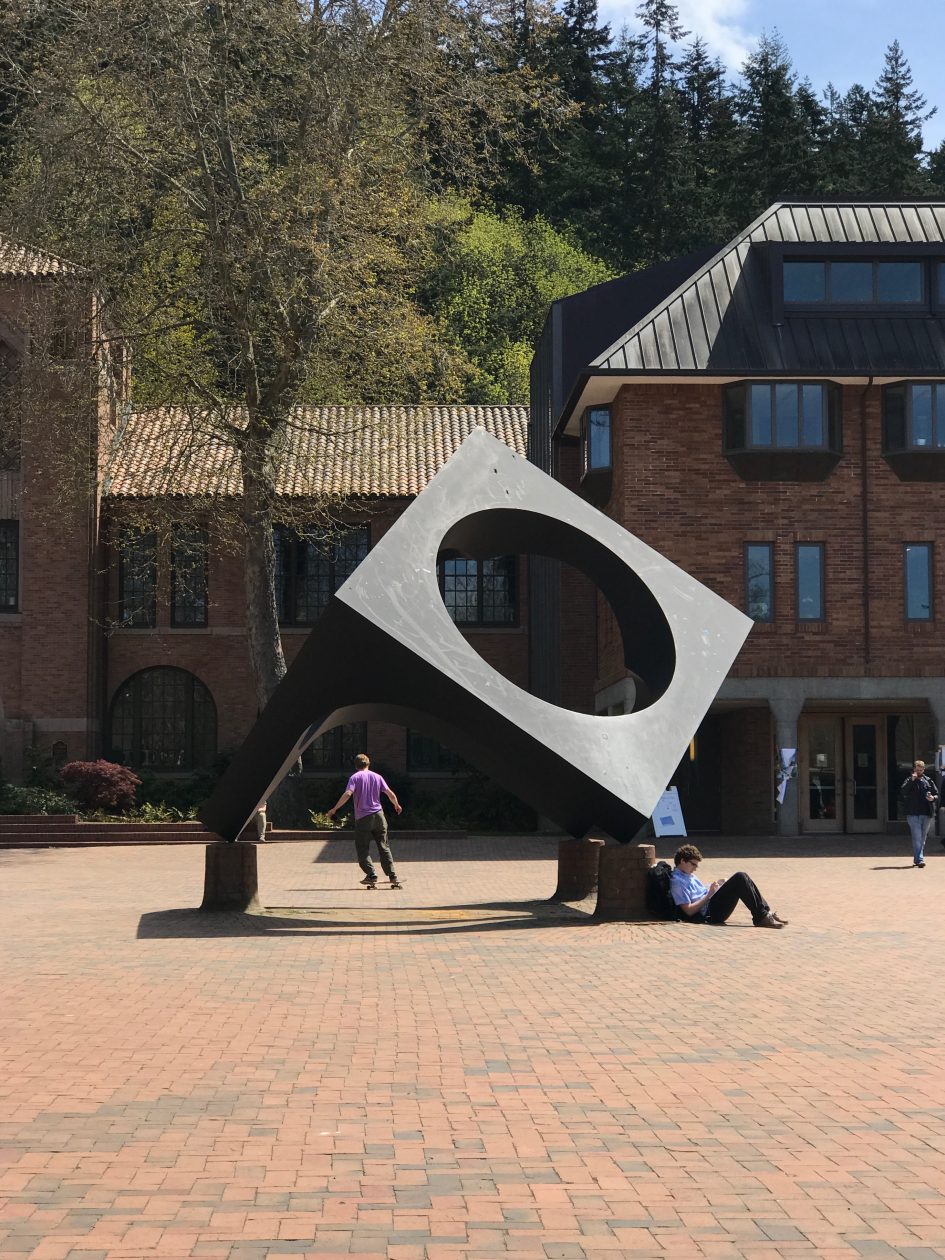ABOUT:
“Sculpture can be a vital force in our everyday life if projected into communal usefulness.” – Noguchi
Skyviewing Sculpture, though a very modern looking piece, was created at the height of postmodern conceptual art in 1969, where the idea was central and formal components fell away from the sculpture. Noguchi was primarily focused on the unity of practicality and nature, creating a piece that marries these concepts in the public eye. Since it is an interactive piece for people to experience, there was no need for vibrant colors or chaotic patterns. Skyviewing Sculpture has clean lines and an effortless quality to it, embodying the minimalist movement and inviting us in for a peaceful moment to just look up.
Born November 17th, 1904, Isamu Noguchi was an American artist whose career started in the 1920s. He is best known for sculpture and public works. In high school, he was an apprentice to to Gutzon Borglum, best known as the creator of Mount Rushmore. He enrolled as a premedical student at Columbia University in New York City, but soon after dropped out and started taking night classes at the Leonardo da Vinci Art School. Noguchi moved to Paris in April of 1927 and became the assistant of Constantin Brâncuși for seven months. During this time, Noguchi became familiar with stone sculpture, which he later admitted was one of Brâncuși’s best techniques.
In his later years, Noguchi left many of his large-scale works in many of the world’s major cities. In 1962, he was elected to membership in the American Academy of Arts and Letters. Isamu Noguchi died on December 30, 1988 at the age of 84. In its obituary for Noguchi, The New York Times called him “a versatile and prolific sculptor whose earthy stones and meditative gardens bridging East and West have become landmarks of 20th-century art.”
Isamu Noguchi was very active in the political sphere following the bombing at Pearl Harbor, protesting the internment of over 100,000 Japanese Americans. Noguchi actually volunteered to spend a year in a camp in order to better the lives of others interned. He is associated with surrealism and later, abstract expressionism in the modernist era. Noguchi was actually known friends with expressionist painter, Willem de Kooning. Though his art was striking to look at, Noguchi’s concept involved practicality and bringing art into the public viewing space. He loved to work with and highlight the natural elements, characteristic of his Japanese style.
“Noguchi wanted to call attention to the dichotomies inherent in much of his work: he merged geometric and organic forms, found value in both positive and negative space, and created works that challenged the boundaries of design and art.”
 This description is perfectly encapsulated in The Sky Viewing Sculpture, placed directly in the middle of Western Washington University’s campus. The popular sculpture is large and Western students are free to interact with the art, whether it be as simple walking under it, hammocking beneath it, or admiring its immense presence in Red Square from Fisher Fountain. The sculpture is actually a perfect cube, incorporating Noguchi’s eye for geometric shapes; however, it is only half of a cube, leaving the bottom open to allow a natural flow of traffic through and around the sculpture. The use of positive and negative space is deliberate with this particular piece. The large open circular spaces in the iron plating make for an unobstructed view of the world around us, and the sky above us. In New York during the 1940’s Noguchi drew much of his influence from the surrealist movement that was current at the time. During this period, he produced Kouros and Lunars, some of his most well-known works, which catapulted him into the New York art scene.
This description is perfectly encapsulated in The Sky Viewing Sculpture, placed directly in the middle of Western Washington University’s campus. The popular sculpture is large and Western students are free to interact with the art, whether it be as simple walking under it, hammocking beneath it, or admiring its immense presence in Red Square from Fisher Fountain. The sculpture is actually a perfect cube, incorporating Noguchi’s eye for geometric shapes; however, it is only half of a cube, leaving the bottom open to allow a natural flow of traffic through and around the sculpture. The use of positive and negative space is deliberate with this particular piece. The large open circular spaces in the iron plating make for an unobstructed view of the world around us, and the sky above us. In New York during the 1940’s Noguchi drew much of his influence from the surrealist movement that was current at the time. During this period, he produced Kouros and Lunars, some of his most well-known works, which catapulted him into the New York art scene.
BIBLIOGRAPHY:
- “Biography.” Biography | The Noguchi Museum. N.p., n.d. Web. 26 Apr. 2017.
- Fuller, Richard Buckminster. Isamu Noguchi: A Sculptor’s World. London: Thames and Hudson, 1967. Print.
Group members: Molly Wood-Dorner, Ella Tanaka, Taylor Massengale

